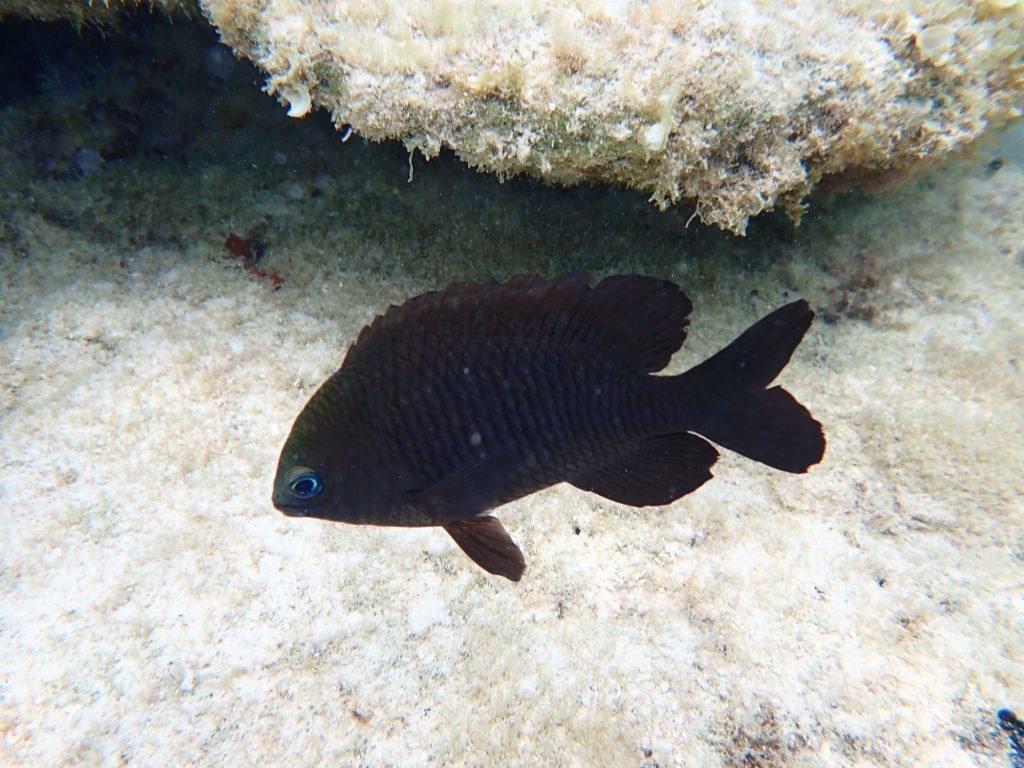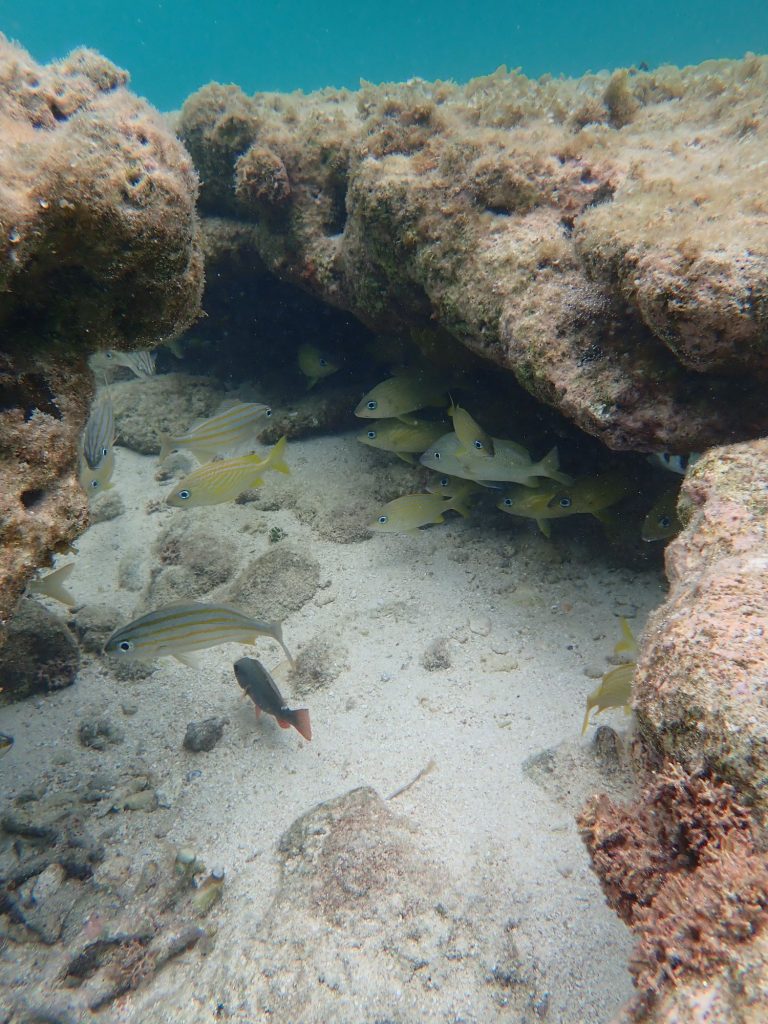24th to 26th June 2022
Anchored in 3m of water, what we hoped was just-more-than-a-mosquito’s-flight from the island. We’re getting better at guessing that. The seagrass is thick so its probably best to pick a sandy patch for most cruisers. We’re getting blasé with our vastly oversized Rocna and didn’t bother, it dragged a few meters before settling in.
Not as quiet as the more southern anchorages we’ve visited so far, I’m guessing South Water is on the Moorings charter boat itinerary plus there’s lots of more local activity (fishermen using the pass, people visiting the bar ashore for a quick drink, and such).
There’s a good 4G connection here.
The Pelican resort might be closed for maintenance? – it seemed near-abandoned, but there were a couple of maintenance guys around. The small beach on the south shore was nice for playing, but the island itself isn’t particularly special (compared to the others nearby). What’s special is the reef around it – in easy swimming distance is the barrier reef. We also saw A LOT of eagle rays as soon as we had anchored, and swimming/paddle-boarding to the beach, there Charlotte counted 7 in the water between the boat and shore. Such amazing creatures to watch.
Great snorkeling off Carrie Bow Cay – towards the reef on the Northern side of the island, where the surface is mostly sand with the darker patches is where we found some great coral heads. Further inshore was mostly seagrass, with some coral – beautiful in its own way but the coral is spectacular. Charlotte, Arthur and Theo saw an enormous ray, more than a metre in diameter- unfortunately, the camera was out of battery so we got few pictures snorkeling this area of reef. We were told by the caretakers of the Carrie Bow that Reef Sharks visit here fairly regularly, so keep that in mind.
A Smithsonian research instititution is based on Carrie Bow Cay- we were given a tour of the site, including accomodation, kitchen, a library, equipment of preparing specimens, and wet and dry labs (most of the equipment in the dry lab was packed away as the facility is only just reopening after COVID). The building has been specially built to withstand hurricane force winds, circumstances in which the island is usally evacuated- it certainly feels pretty exposed, but its location on the barrier reef also makes it a unique research facility. We were shown the log book, deatiling the visitors, their finds and their research- what an amazing record, full of wonderful illustrations and beautiful paintings. Arthur was especially excited that the library houses copies of the same reef idenitifcation books we have!
We’re enjoying our time in Belize so much we are half-considering skipping Guatemala. $650US per month in immigration and customs fees is a big factor against staying here, as is the less-comprehensive hurricane safety (although there’s plenty of shelter for storms). But the sea is wonderful, and it’s nice to be sailing again.






























